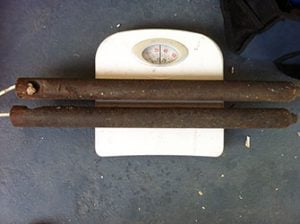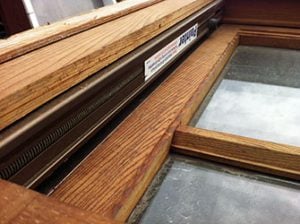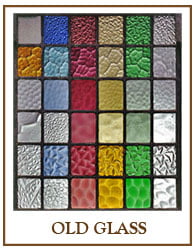How To: Identify Sash Window Balance Systems
Table of Contents
Introduction
For a vertical sliding sash to stay in the opened position some form of counter-balance is required to offset the weight of the glazed frame. In this article, we take a look at the various options that have been developed.
The overwhelming majority of traditional timber sash windows are double-hung box framed windows, meaning that both the top and bottom sash have been hung on cords with weights attached. Both the top and bottom glazed sash frames will travel vertically in the frame independently of one another. In our opinion this simple 17 century system has never been bettered, it has only ever been replaced by cheaper, less effective systems.
Far less common are single-hung box framed windows. As the name suggests only one of the glazed sash frames will travel vertically, usually being the lower sash. Single-hung windows are most likely to be encountered in remote communities when, at the time they were being established, transporting weights by horse and cart would have added a significant cost. Sometimes sash weights might have been made locally or eliminated altogether with simple sash pins or swivels used instead.
Building booms necessitate cheaper mass-produced homes. Following the first world war, the implementation of iron-framed casement windows surged in popularity; following the second world war, spring balanced systems became readily adopted.
Manual Systems
Swivel Block
The earliest solution for keeping a sliding sash open. This is simply a physical stop that swivels into place below the sash to stop it from dropping.
Sash Window Balance Systems
Traditional Weighted Box Sash Window- Pulley And Cord
 A traditional box sash window uses an Iron (occasionally Lead) weight, attached to a cord, passed over a pulley and fixed to the glazed sash frame. As the window is operated the weights travel upwards or downwards concealed inside the frame.
A traditional box sash window uses an Iron (occasionally Lead) weight, attached to a cord, passed over a pulley and fixed to the glazed sash frame. As the window is operated the weights travel upwards or downwards concealed inside the frame.
Any increase in weight, such as fitting thicker glass requires the weights to be re-balanced using small add-on weights known as ‘make weights’. Make-weights are usually cast from Lead.
- The original and still the best system -when correctly set-up.
- The momentum of the weights allows the sash to glide.
- Time-proven, simple system.
Sash Window Spring Balance
 c.1880 springs were first being used to ‘balance’ the sashes. The springs were twice the length of the sash and so would spring open once the fastener was released.
c.1880 springs were first being used to ‘balance’ the sashes. The springs were twice the length of the sash and so would spring open once the fastener was released.
The use of metal springs was continually developed and today they are the most common balance systems used in mass-produced metal, plastic as well as wooden windows.
Sash Window Spiral Balance
 Invented in America these balances were introduced in the 1930s, but their popularity really took off after the war. Spring balances offered a cheaper way to manufacture vertical sliding sash windows; not a better way. There are several variations of these balances but they all utilise a spring to offset the weight of the sash. The windows do not glide like a weighted sash; the spring simply stops the sash from dropping. Originally the spring was encased in a metal sheath but modern replacements may utilise a plastic case.
Invented in America these balances were introduced in the 1930s, but their popularity really took off after the war. Spring balances offered a cheaper way to manufacture vertical sliding sash windows; not a better way. There are several variations of these balances but they all utilise a spring to offset the weight of the sash. The windows do not glide like a weighted sash; the spring simply stops the sash from dropping. Originally the spring was encased in a metal sheath but modern replacements may utilise a plastic case.
- Available in a wide range of sizes to suit any window.
- Time-proven design
Sash Tape Balance (ACME Balance, Pullman Coils)
 This type of balance can be traced back to the late Victorian era but it was not until the building boom, following the Second World War, that they became popular. Similar to a retractable tape measure, in principle, the end of the tape connects to the bottom of the sash so that as the window opens the tape retracts into the balance body that contains a pre-tensioned spring.
This type of balance can be traced back to the late Victorian era but it was not until the building boom, following the Second World War, that they became popular. Similar to a retractable tape measure, in principle, the end of the tape connects to the bottom of the sash so that as the window opens the tape retracts into the balance body that contains a pre-tensioned spring.
Larger frames require 2 balances per sash (4 balances per double-hung window) but on smaller windows, it’s common to find just 1 balance and possibly a sash-roller or metal strip on the opposite sash stile,
Uncommon in the UK where the spring balance was far more popular, but used extensively in the USA & Australia.
Sash Window Jamb Liners (Tilt & Slide)
 A variation of the spring balance. This system was designed to offer the extra functionality of tilting inwards for supposed easier cleaning. In practise very few people make use of this option and in our experience they are often a disappointing balance system. Much of the weight is carried on flimsy plastic lugs that don’t last.
A variation of the spring balance. This system was designed to offer the extra functionality of tilting inwards for supposed easier cleaning. In practise very few people make use of this option and in our experience they are often a disappointing balance system. Much of the weight is carried on flimsy plastic lugs that don’t last.
Other Sash Window Balance Systems
Alternative systems come and go. Most new balance systems incorporate a spring balance at their core.












